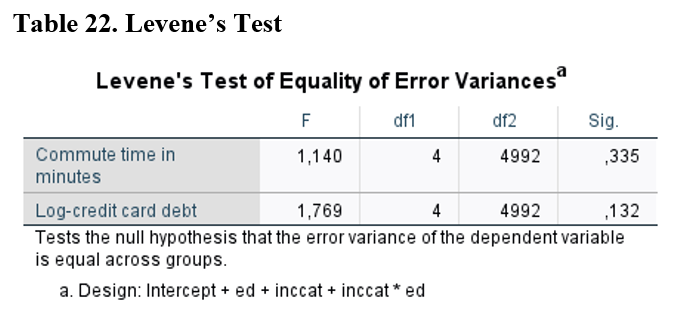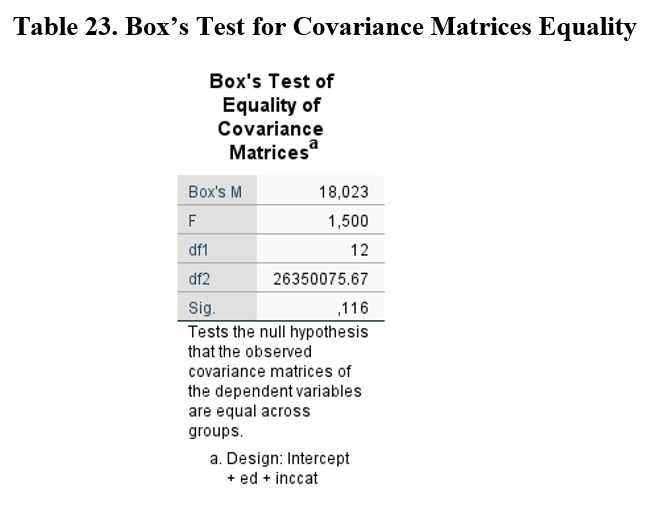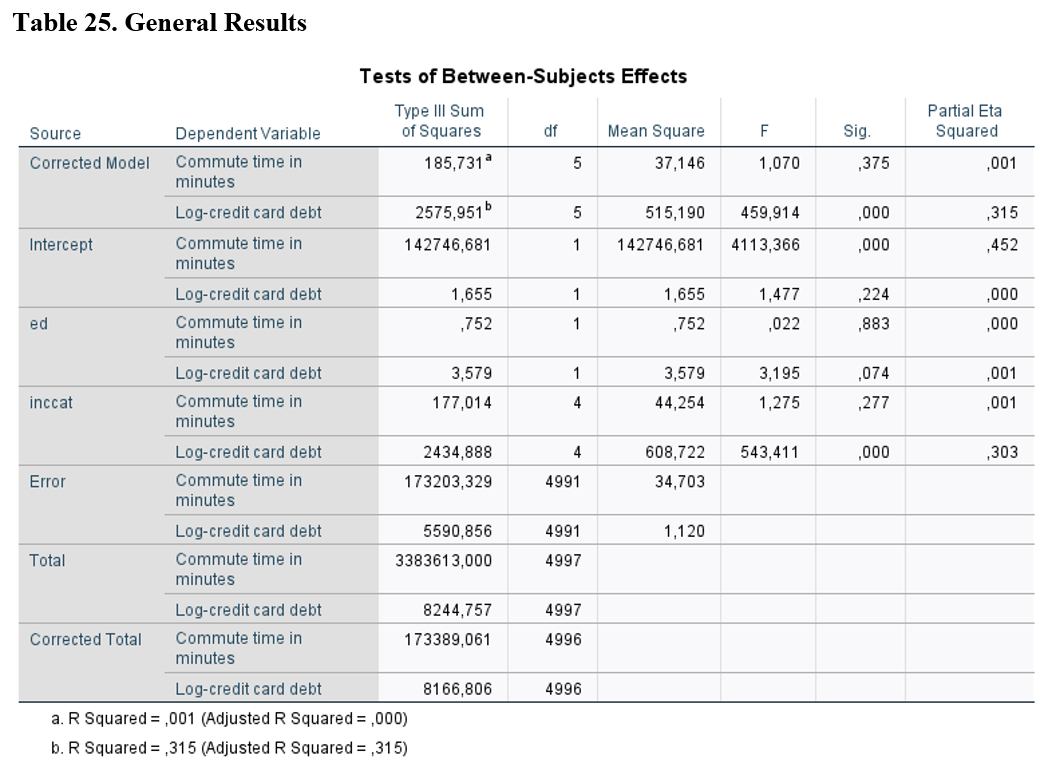In the Mancova, there are at least two dependent variables in the model. Your model has to have at least one covariate.
For this example we will use dataset from SPSS samples: customer_dbase.sav
Select customer_dbase.sav.
Click on Analyze section from the top menu.
Find General Linear Model section under Analyze. Then click on Multivariate… button.
Once you clicked you will see the following menu:

We use Commute time in minutes (commutetime) and Log-Credit Card Debt (Increddebt) as dependent variables and Income category in thousands (inccat) as categorical independent variable and Years of education (ed) as covariate.
As second step, click on the model button:

In MANCOVA analysis (like in ANCOVA), there is one additional assumption: Homogeneity of regression slopes.
In order to test this assumption, click on the Model button on the right.
Click on build terms or custom model.
Select each of the factor and covariate. Then select both of them on the right than click on the arrow button. This way, you will be able to analyze factor variable, covariate and their interaction term.
Once you are done, click on Continue button. Then click on the OK button in the main menu.

What you need to check in the table of Test of Between-Subjects Effects is the Sig. (p-value) of interaction term which is inccat*ed. If p-value is bigger than 0.05, in other words insignificant, then your model doesn’t violate the assumption of homogeneity of regression slopes. In this example, the assumption is not violated (since the p-value of the interaction term for both dependent variable are bigger than 0.05), so we can continue the analysis.

Another assumption for the equal distribution of the error variance of the dependent variable is tested by Levene’s test. As it can be seen that both of the Sig. (p-value) are higher than 0.05. Therefore, we accept the null hypothesis and the model meets the assumption. So, we can continue with the analysis.
Since you checked the assumptions, you need to click Analyze -> General Linear Model -> Multivariate again.
Now, you need to click Model… button on the menu at the right side. Then select Full factorial and continue.
After that click on the Options… button and select Descriptive Statistics, Estimates of effect size, Homogeneity tests and click on Continue… button.

One of the assumptions of MANOVA is the equality of covariance matrices. As you can see under the result table, the null hypothesis for the test is that covariance matrices of the dependent variables are equal across groups. As results show that the Sig. (p-value) is above 0.05 which means significant. Therefore we accept the null hypothesis and can continue with the analysis.


Multivariate test results show that there is a significant relationship between income groups and dependent variables, on the other hand Years of Education variable has no significant effect on them.

Test of between-subjects effects shows that income groups variable has a significant relationship with credit card debt but insignificant relationship with commute time in minutes.
Since previous table showed us that there is no significant effect of Years of Education on both dependent variables, we cannot examine the between-subjects effect.









